A neutral organic compound A(C5H8O2) does not decolorize Bayer.s reagent and on hydrolysis with dilute H2SO4 produces B(C2H10O3), which is diastereomeric. B on heating with concentrated H2SO4 undergoes dehydration producing C(C5H8O2), which shows geometrical isomerism. Also B on treatment with acidic dichromate solution produced D(C5H8O2), which is enantiomeric and gives a yellow precipitate with NaOI. D on gentle heating produces E (C4H8O),which is non-resolvable.
Compound (B) is


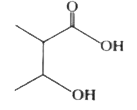

The correct Answer is:C
Topper's Solved these Questions
- CARBOXYLIC ACIDS AND THEIR DERIVATIVESBOOK - MS CHOUHANCHAPTER - CARBOXYLIC ACIDS AND THEIR DERIVATIVESEXERCISE - ADDITIONAL OBJECTIVE QUESTIONS (Matrix Match Type)
1 Videos
- CARBOXYLIC ACIDS AND THEIR DERIVATIVESBOOK - MS CHOUHANCHAPTER - CARBOXYLIC ACIDS AND THEIR DERIVATIVESEXERCISE - ADDITIONAL OBJECTIVE QUESTIONS (SINGLE CORRECT CHOICE TYPE)
18 Videos
- CARBOXYLIC ACID AND THEIR DERIVATIVES BOOK - MS CHOUHANCHAPTER - CARBOXYLIC ACID AND THEIR DERIVATIVES EXERCISE - Subjective Problems
1 Videos
- CONJUGATED UNSATURATED SYSTEMSBOOK - MS CHOUHANCHAPTER - CONJUGATED UNSATURATED SYSTEMSEXERCISE - Additional Objective Questions (Multiple Correct Choice Type)
4 Videos
Similar Questions
An organic compound A (C7H6Cl2) on treatment with NaOH solution gives another compound B (C7H6O). B on oxidation gives and acid C (C7H6O2) which on treatment with a mixture of conc. HNO3 and H2SO4 gives a compound D (C7H5NO4). B on treatment with conc. NaOH gives a compound E (C7H8O) and C6H5COONa. Deduce the structures of [A], [B], [C], [D] and [E].
View SolutionAn organic compound A(C6H10) on reduction first gives B(C6H12) and finally C(C6H14). Compound A on ozonolysis followed by hydrolysis gives two aldehydes D(C2H4O) and E(C2H2O2). Oxidation of B with acidified KMnO4 gives the acid F(C4H8O2). determine the structures of the compounds A to F with reasoning.
View Solution
Knowledge Check
Compound 'A' with the formula C3H8O on vigorous oxidation produces an acid C3H6O2. 'A' is
Aa tertiary alcoholBa secondary alcoholCa primary alcoholDnot necessarily an alcoholCompound (A) C8H6O2 on treatment with aq. NaOH followed by acidification gives (B) C8H8O3 which on oxidation gives benzoice acid only :
A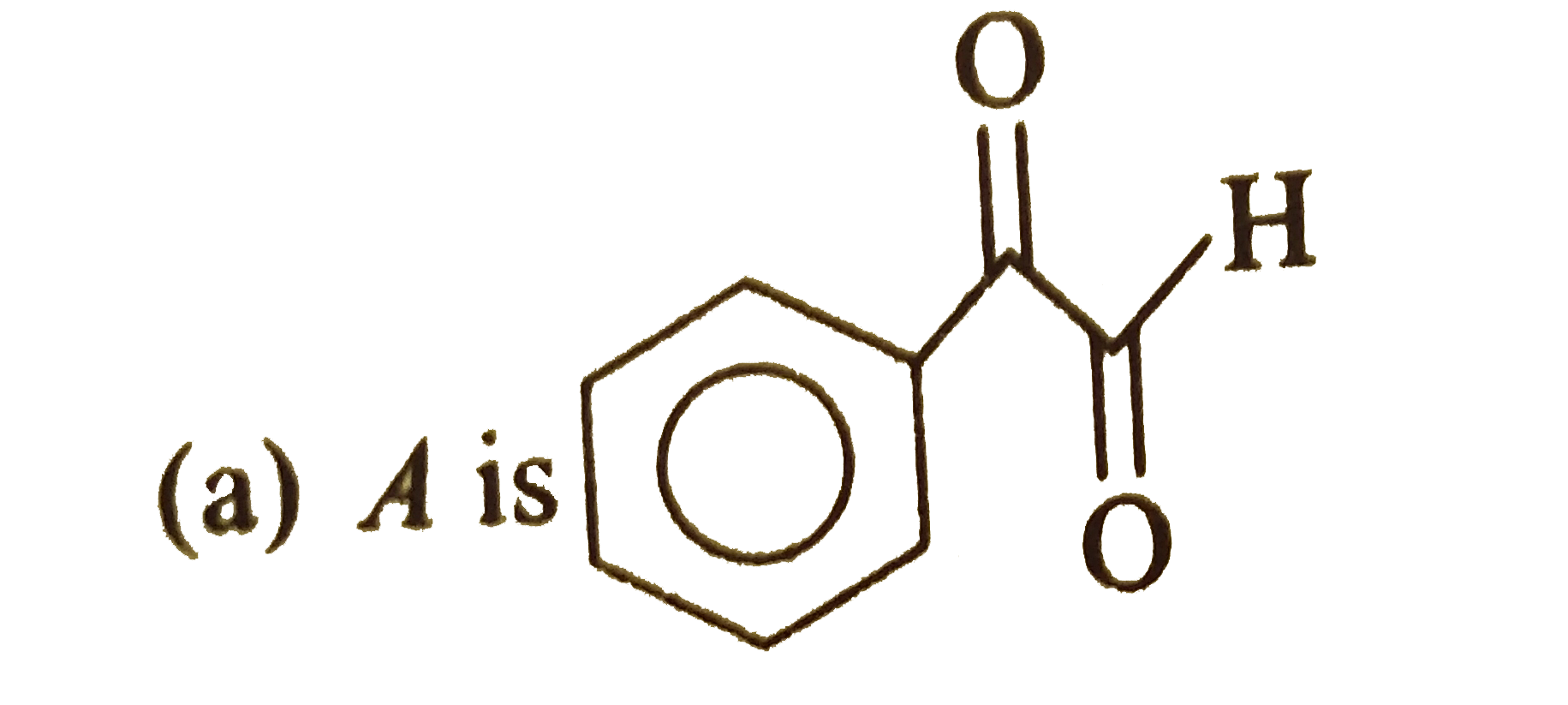 B
B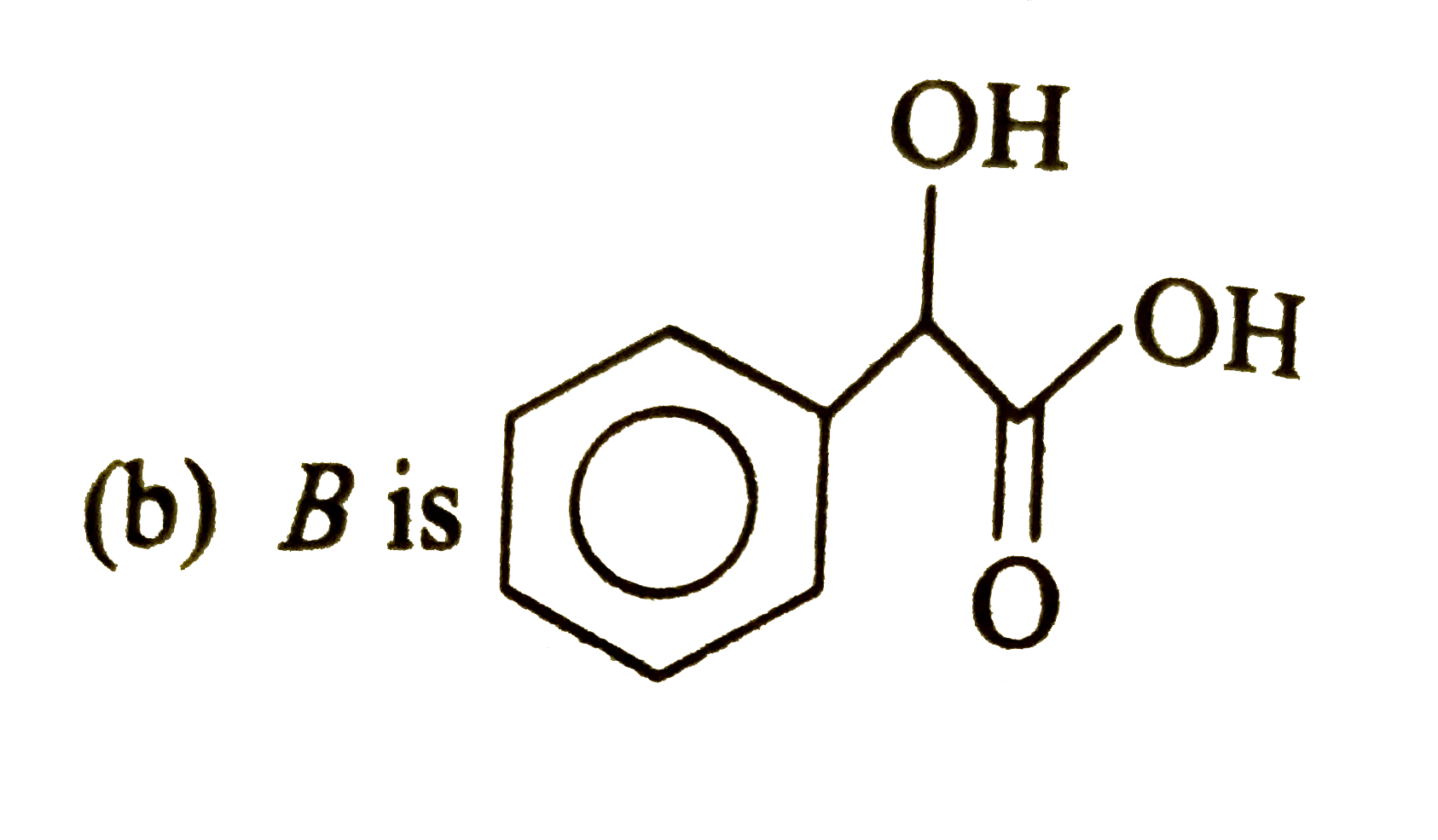 C
C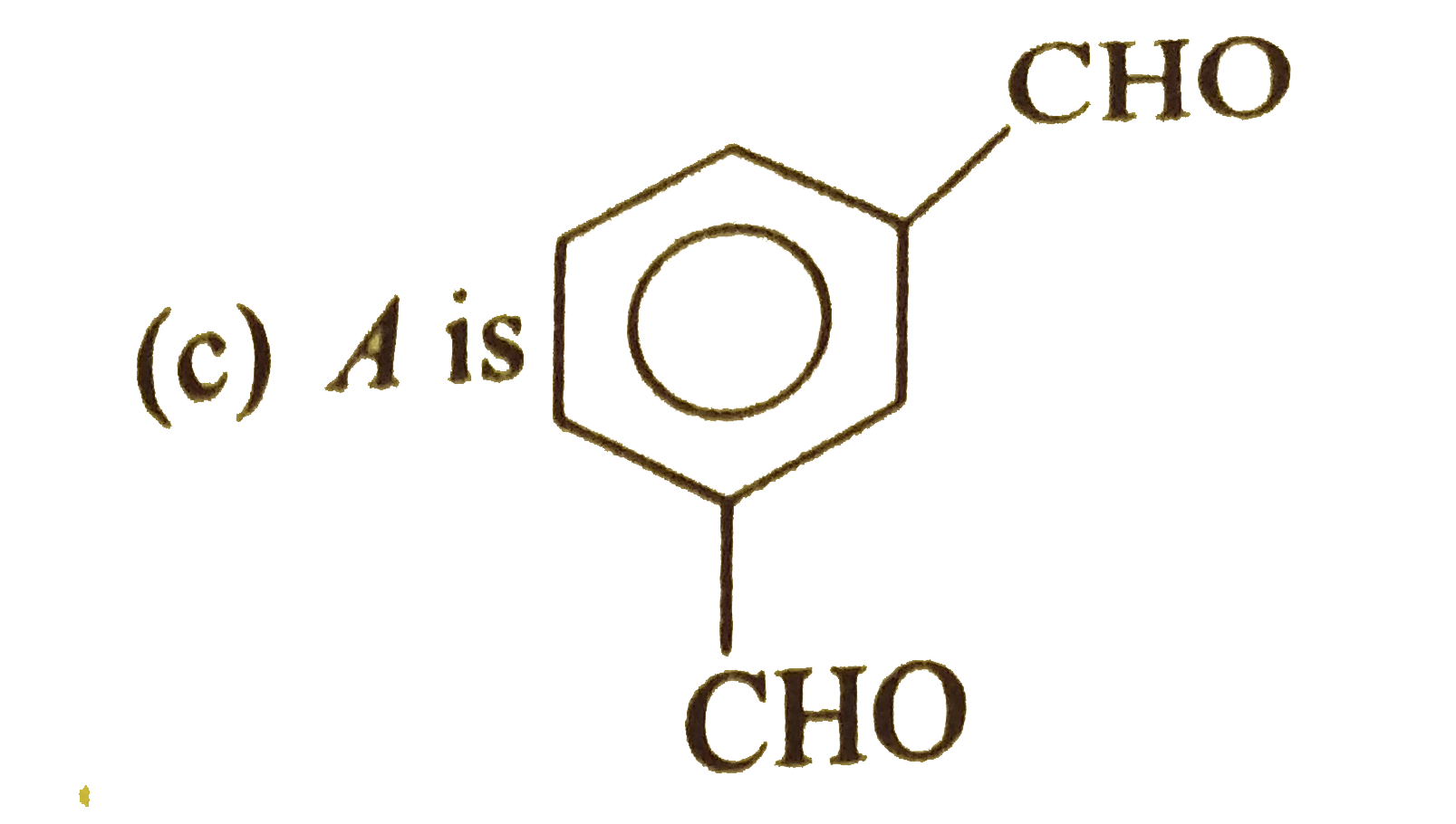 D
D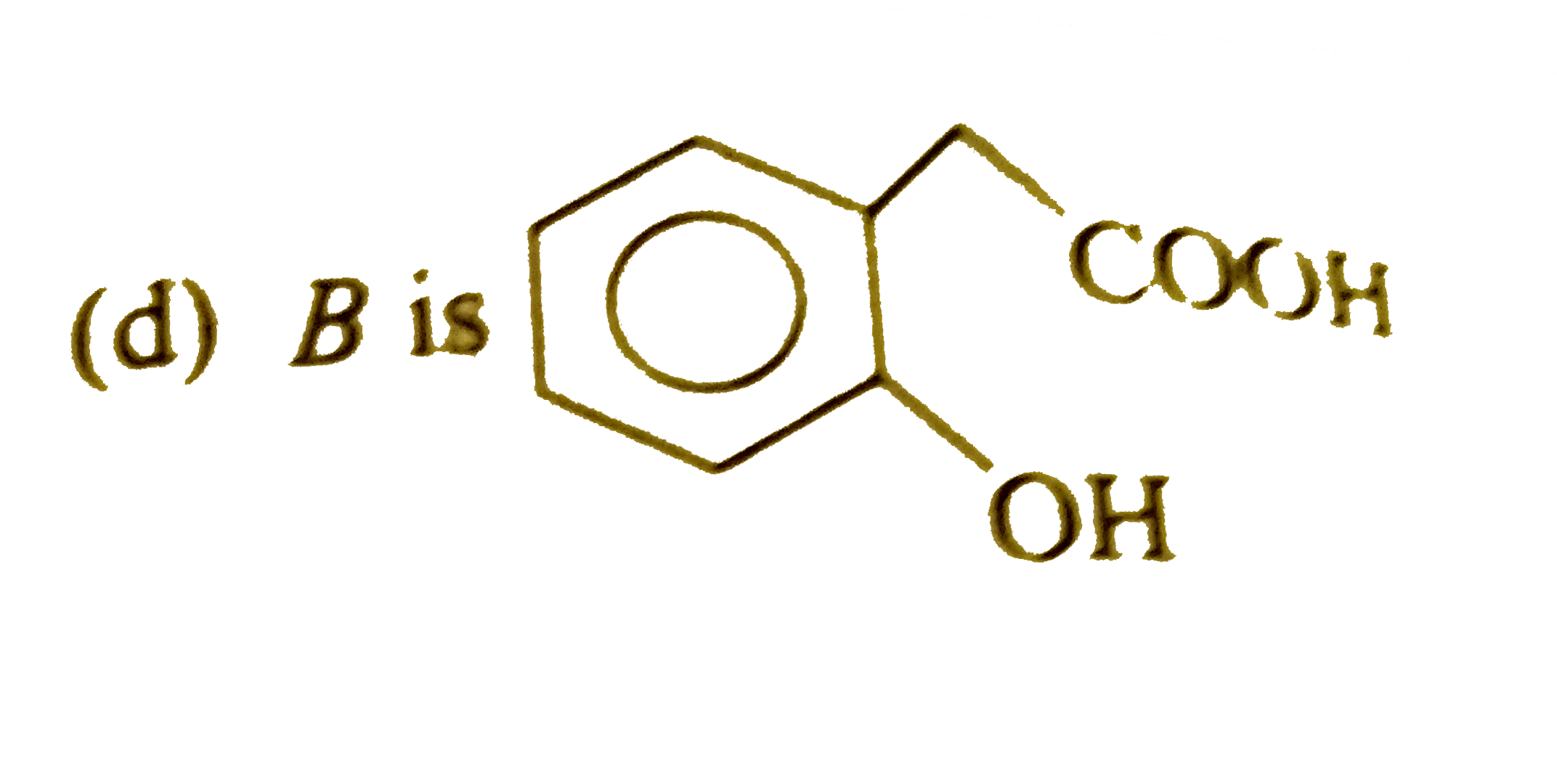
4 A neutral, resolvable organic compound A has molecular formula (C8H16O2). A on treatment with LiAlH4 gives isomeric B and C(C4H10O) of which only B is optically active. B on treatment with acidified dichromate solution gives D(C4H8O), which on refluxing with dilute NaOH followed by acidification of product gave E(C8H14O). E on heating with N2H4 in alkaline medium affords F(C8H16) which on treatment with B.H/H,O,/HO produced a resolvable G (C8H18O). G on treatment with acidified dichromate solution produced H(C8H16O), which on treatment with MCPBA produces A.
Compound (B) isA B
B C
C D
D
4 A neutral, resolvable organic compound A has molecular formula (C8H16O2). A on treatment with LiAlH4 gives isomeric B and C(C4H10O) of which only B is optically active. B on treatment with acidified dichromate solution gives D(C4H8O), which on refluxing with dilute NaOH followed by acidification of product gave E(C8H14O). E on heating with N2H4 in alkaline medium affords F(C8H16) which on treatment with B.H/H,O,/HO produced a resolvable G (C8H18O). G on treatment with acidified dichromate solution produced H(C8H16O), which on treatment with MCPBA produces A.
Compound (E)
View Solution4 A neutral, resolvable organic compound A has molecular formula (C8H16O2). A on treatment with LiAlH4 gives isomeric B and C(C4H10O) of which only B is optically active. B on treatment with acidified dichromate solution gives D(C4H8O), which on refluxing with dilute NaOH followed by acidification of product gave E(C8H14O). E on heating with N2H4 in alkaline medium affords F(C8H16) which on treatment with B.H/H,O,/HO produced a resolvable G (C8H18O). G on treatment with acidified dichromate solution produced H(C8H16O), which on treatment with MCPBA produces A.
Compound (H) is
View Solution4 A neutral, resolvable organic compound A has molecular formula (C8H16O2). A on treatment with LiAlH4 gives isomeric B and C(C4H10O) of which only B is optically active. B on treatment with acidified dichromate solution gives D(C4H8O), which on refluxing with dilute NaOH followed by acidification of product gave E(C8H14O). E on heating with N2H4 in alkaline medium affords F(C8H16) which on treatment with B.H/H,O,/HO produced a resolvable G (C8H18O). G on treatment with acidified dichromate solution produced H(C8H16O), which on treatment with MCPBA produces A.
Compound (A) is
View SolutionA compound with the formula C4H10O yields another compound C4H8O, on heating with K2Cr2O7 and H2SO4. The compound C4H10O is expected to be
View SolutionAn ester A(C9H10O2) with excess of CH3MgBr upon hydrolysis and then with conc. H2SO4 gives an olefin (B). Ozonolysis of (B) gave a ketone (C8H8O) which gave +ve iodoform test. What is A?
View Solution
